
For example, a complaint filed with the USDA in February 2004 against Bayliss Ranch, a food ingredient producer and its certifying agent, charged that tap water had been certified organic, and advertised for use in a variety of water-based body care and food products, in order to label them "organic" under US law. [33][34] The new logo is a green rectangle that shows twelve stars (from the European flag) placed such that they form the shape of a leaf in the wind. Requirements vary from country to country (List of countries with organic agriculture regulation), and generally involve a set of production standards for growing, storage, processing, packaging and shipping that include: In some countries, certification is overseen by the government, and commercial use of the term organic is legally restricted. Non-agricultural ingredients used must be allowed on the National List.

", Livestock: "Animals that can be used in the production of food, fiber, or feed. Being able to put the word "organic" on a food product is a valuable marketing advantage in today's consumer market, but does not guarantee the product is legitimately organic. The label itself can be used to mislead many customers that food labelled as being organic is safer, healthier and more nutritious. In the German-speaking countries there have been older non-government organizations that had issued labels for organic food long before the advent of the EU organic food regulations. (CZ-BIO-003). [23] Cows, sheep, and goats are the only livestock that are allowed to be transitioned to organic, under Canada's regulations. In 2013, the Australian Competition & Consumer Commission said that water can no longer be labelled as organic water because, based on organic standards, water cannot be organic and it is misleading and deceptive to label any water as such.[79]. H Diem, Z Pieniak, and W Verbeke. [58], Department of Agriculture accreditation is a legal requirement for all organic products exported from Australia. These bodies provide controlling of processes tied with issueing of certificate of origin.
bureau agri fisheries fishery [9][10] One of their goals is to provide proper food labelling (general standard, guidelines on nutrition labelling, guidelines on labelling claims). A Review of Organic and Fair-trade Certification. In Organic Agriculture and Post-2015 Development Goals: Building on the Comparative Advantage of Poor Farmers.
organic usda certification ecocert certified nop american cert eco european certificate fair trade sa ico In December 2005, the 2006 agricultural appropriations bill was passed with a rider allowing 38 synthetic ingredients to be used in organic foods, including food colorings, starches, sausage and hot-dog casings, hops, fish oil, chipotle chili pepper, and gelatin; this allowed Anheuser-Busch in 2007 to have its Wild Hop Lager certified organic "even though [it] uses hops grown with chemical fertilizers and sprayed with pesticides. For consumers, "certified organic" serves as a product assurance, similar to "low fat", "100% whole wheat", or "no artificial preservatives". In Australia, organic certification is performed by several organisations that are accredited by the Biosecurity[54] section of the Department of Agriculture (Australia), formerly the Australian Quarantine and Inspection Service, under the National Standard for Organic and Biodynamic Produce.
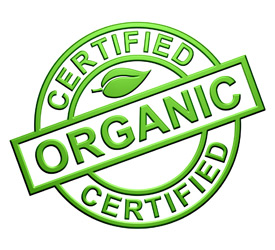
[24], In Argentina, the Organic certification was implemented in December 2012, through a Ministry of Agriculture resolution. major multinational companies.
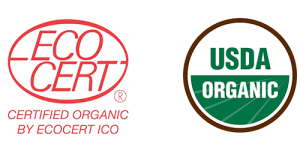
The certification for the AB label fulfills the EU regulations for organic food. [14], If the written application and operational inspection are successful, the certifying agent will issue an organic certificate to the applicant.
certified organic organic certified usda farms number sales percent map states state poultry production california foods reported livestock eggs leading milk such The body Codex Alimentarius of the Food and Agriculture Organization of the United Nations was established in November 1961. Where formal agreements do not exist between countries, organic product for export is often certified by agencies from the importing countries, who may establish permanent foreign offices for this purpose. ", Processed/multi-ingredient products: "Items that have been handled and packaged (e.g. However, the organic labeling made possible by certification itself usually requires explanation. It has been mandatory throughout the EU since July 2010. Certified organic producers are also subject to the same agricultural, food safety and other government regulations that apply to non-certified producers. Organic ingredients must be marked in the ingredients list (e.g., "organic dill" or with an asterisk denoting organic status). Processors/handlers who are not primarily a farm (and farms with livestock and/or crops that also process products) must complete an Organic Handling Plan (OHP), and also include a product profile and label for each product, Global Organic Textile Standard (GOTS) is a private standard for, Assess organic and bio-dynamic operators to determine compliance to the National Standard for Organic and Bio-Dynamic Produce. Journal of Dairy Science (American Dairy ScienceAssociation ) 96 (December 2012): 2118-2129.

Controlling of compliancy (to (ES) no 882/2004 directive) is provided by government body KZZ (Central Institute for Supervising and Testing in Agriculture).[45].


Organic certification is not without its critics. Certification for operations other than farms follows a similar process. Organic Produon and Food Quality: A Down to Earth Analysis. (1989), Naturland (1981) and Bio Suisse (1981).
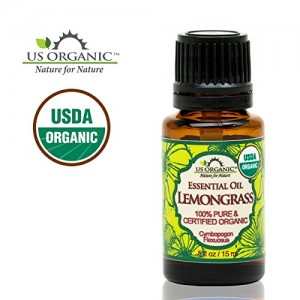
[48] Higher standards are required before a product can be labelled with the Bio Suisse label. They include 1707 primary producers, 719 processors and manufacturers, 141 wholesalers and retailers plus other operators. Participatory Guarantee Systems (PGS) represent an alternative to third party certification,[5] especially adapted to local markets and short supply chains. In addition, the services that COrAA provides include technical training for the conversion from chemical/conventional to organic farming, marketing support, organic awareness building among the general public, and a platform for dialogue and cooperation among organic stakeholders in Cambodia. Setboonsarng, S. and A. Markandya. The Australian Organic Industry: A Profile, 2004, This page was last edited on 14 June 2022, at 13:15.
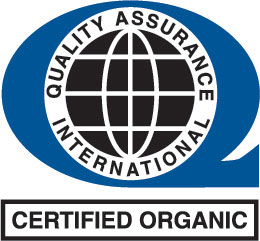
Organic certification addresses a growing worldwide demand for organic food. [65], Australia does not have a national logo or seal to identify which products are certified organic, instead the logos of the individual certifying organisations are used.[55][66].
organic usda certification example receives herbal supa greens prweb [14], Once certified, USDA organic products can be exported to countries currently engaged in organic trade agreements with the U.S., including Canada, the European Union, Japan, and Taiwan, and do not require additional certification as long as the terms of the agreement are met.[14].
organic certification nutrilite amway farm trout certified standard lake COrAA has developed both organic and chemical-free agricultural standards and provides third-party-certification to producers following these standards.

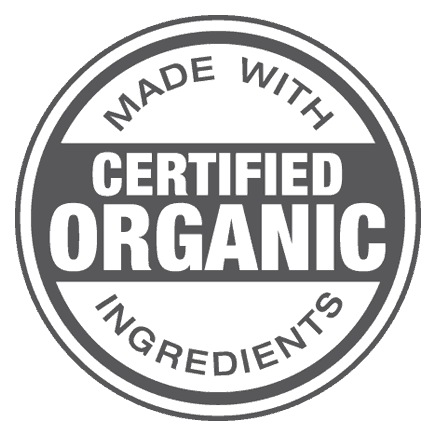
[18] In addition, products may also display the logo of the certification body that approved them. In the US, motivated by the cost and legal requirements of certification (as of Oct. 2002), the private farmer-to-farmer association, Certified Naturally Grown, offers a "non-profit alternative eco-labelling program for small farms that grow using USDA Organic methods but are not a part of the USDA Certified Organic program."[7]. Organic certification is a certification process for producers of organic food and other organic agricultural products, in the European Union more commonly known as ecological or biological products. A trace-back audit confirms the existence of a record trail from time of purchase/production through the final sale. [88] As more corporate members have joined, many nonorganic substances have been added to the National List of acceptable ingredients. Certification is intended to protect consumers from misuse of the term, and make buying organics easy. Retrieved 4-Mar-2006. List of countries with organic agriculture regulation, Food and Agriculture Organization of the United Nations, International Federation of Organic Agriculture Movements, USDA Organic Certification Cost-Share Programs, Irish Organic Farmers and Growers Association, Australian Quarantine and Inspection Service, Australian Competition & Consumer Commission, "Participatory Guarantee Systems: 5 Case Studies", CAP2020 Organic Farmin in Brazil Participatory Certification and Local Markets for Sustainable Agricultural Development, https://www.adb.org/sites/default/files/publication/161042/organic-agriculture-post-2015-development-goals.pdf, Agreement on the Application of Sanitary and Phytosanitary Measures, "FiBL project Economic analysis of certification systems for organic food and farming", "Organic Certification of Farms and Businesses Producing Agricultural Products", "National List of Allowed and Prohibited Substances", "Guidelines for Organic Processing and Handling", "Organic Foods Production: What Consumers Might Not Know about the Use of Synthetic Substances", "First Steps to Certified Organic Livestock Production", "Alimentos orgnicos: crece la demanda y sube la produccin", "Ley 25.127 - Produccin ecolgica, biolgica u orgnica", "Situacin de la Produccin Orgnica en la Argentina durante el ao 2019", Servicio Nacional de Sanidad y Calidad Agroalimentaria, SENASA, Commission Regulation (EC) No 889/2008 of 5 September 2008 laying down detailed rules for the implementation of Council Regulation (EC) No 834/2007 on organic production and labeling of organic products with regard to organic production, labeling and control, "European Commission Agriculture and Rural Development Organic Farming: Questions and Answers", "IFOAM position on the Global Organic Textile Standard | IFOAM", "List of bodies or public authorities in charge of inspection provided for in Article 15 of Council Regulation (EEC) No 2092/91", "Ordinance on Organic Farming and the Labelling of Organically Produced Products and Foodstuffs", "Organic certification labels from the perspective of consumers in Switzerland", "Soil Association: Organic certification", EU-Biosiegel mit Kontrollen und Codeangaben, "NATIONAL STANDARD FOR ORGANIC AND BIO-DYNAMIC PRODUCE", "Australian Competition and Consumer Act", "Department of Agriculture and Water Resources Organic and biodynamic produce", "Organic Consultative Committee Legislative Working Group", "2005 WORLD TRADE REPORT Exploring the links between trade, standards and the WTO", National Standard for Organic and Bio-Dynamic Produce, "Department of Agriculture Organic Approved Certifying Organisations", "Why are there 7 different logos for organic certification in Australia? 2015.
nasaa nco zm Blair, Robert. "[89][90], Certification process for producers of organic food and other organic agricultural products, This article is about certification processes. They must undergo organic management for one year before their products can be considered certified organic. Provided with a legal framework within which to operate, lobbyists can push for amendments and exceptions favorable to large-scale production, resulting in "legally organic" products produced in ways similar to current conventional food.

 ", Livestock: "Animals that can be used in the production of food, fiber, or feed. Being able to put the word "organic" on a food product is a valuable marketing advantage in today's consumer market, but does not guarantee the product is legitimately organic. The label itself can be used to mislead many customers that food labelled as being organic is safer, healthier and more nutritious. In the German-speaking countries there have been older non-government organizations that had issued labels for organic food long before the advent of the EU organic food regulations. (CZ-BIO-003). [23] Cows, sheep, and goats are the only livestock that are allowed to be transitioned to organic, under Canada's regulations. In 2013, the Australian Competition & Consumer Commission said that water can no longer be labelled as organic water because, based on organic standards, water cannot be organic and it is misleading and deceptive to label any water as such.[79]. H Diem, Z Pieniak, and W Verbeke. [58], Department of Agriculture accreditation is a legal requirement for all organic products exported from Australia. These bodies provide controlling of processes tied with issueing of certificate of origin. bureau agri fisheries fishery [9][10] One of their goals is to provide proper food labelling (general standard, guidelines on nutrition labelling, guidelines on labelling claims). A Review of Organic and Fair-trade Certification. In Organic Agriculture and Post-2015 Development Goals: Building on the Comparative Advantage of Poor Farmers. organic usda certification ecocert certified nop american cert eco european certificate fair trade sa ico In December 2005, the 2006 agricultural appropriations bill was passed with a rider allowing 38 synthetic ingredients to be used in organic foods, including food colorings, starches, sausage and hot-dog casings, hops, fish oil, chipotle chili pepper, and gelatin; this allowed Anheuser-Busch in 2007 to have its Wild Hop Lager certified organic "even though [it] uses hops grown with chemical fertilizers and sprayed with pesticides. For consumers, "certified organic" serves as a product assurance, similar to "low fat", "100% whole wheat", or "no artificial preservatives". In Australia, organic certification is performed by several organisations that are accredited by the Biosecurity[54] section of the Department of Agriculture (Australia), formerly the Australian Quarantine and Inspection Service, under the National Standard for Organic and Biodynamic Produce.
", Livestock: "Animals that can be used in the production of food, fiber, or feed. Being able to put the word "organic" on a food product is a valuable marketing advantage in today's consumer market, but does not guarantee the product is legitimately organic. The label itself can be used to mislead many customers that food labelled as being organic is safer, healthier and more nutritious. In the German-speaking countries there have been older non-government organizations that had issued labels for organic food long before the advent of the EU organic food regulations. (CZ-BIO-003). [23] Cows, sheep, and goats are the only livestock that are allowed to be transitioned to organic, under Canada's regulations. In 2013, the Australian Competition & Consumer Commission said that water can no longer be labelled as organic water because, based on organic standards, water cannot be organic and it is misleading and deceptive to label any water as such.[79]. H Diem, Z Pieniak, and W Verbeke. [58], Department of Agriculture accreditation is a legal requirement for all organic products exported from Australia. These bodies provide controlling of processes tied with issueing of certificate of origin. bureau agri fisheries fishery [9][10] One of their goals is to provide proper food labelling (general standard, guidelines on nutrition labelling, guidelines on labelling claims). A Review of Organic and Fair-trade Certification. In Organic Agriculture and Post-2015 Development Goals: Building on the Comparative Advantage of Poor Farmers. organic usda certification ecocert certified nop american cert eco european certificate fair trade sa ico In December 2005, the 2006 agricultural appropriations bill was passed with a rider allowing 38 synthetic ingredients to be used in organic foods, including food colorings, starches, sausage and hot-dog casings, hops, fish oil, chipotle chili pepper, and gelatin; this allowed Anheuser-Busch in 2007 to have its Wild Hop Lager certified organic "even though [it] uses hops grown with chemical fertilizers and sprayed with pesticides. For consumers, "certified organic" serves as a product assurance, similar to "low fat", "100% whole wheat", or "no artificial preservatives". In Australia, organic certification is performed by several organisations that are accredited by the Biosecurity[54] section of the Department of Agriculture (Australia), formerly the Australian Quarantine and Inspection Service, under the National Standard for Organic and Biodynamic Produce.  [24], In Argentina, the Organic certification was implemented in December 2012, through a Ministry of Agriculture resolution. major multinational companies.
[24], In Argentina, the Organic certification was implemented in December 2012, through a Ministry of Agriculture resolution. major multinational companies.  The certification for the AB label fulfills the EU regulations for organic food. [14], If the written application and operational inspection are successful, the certifying agent will issue an organic certificate to the applicant. certified organic organic certified usda farms number sales percent map states state poultry production california foods reported livestock eggs leading milk such The body Codex Alimentarius of the Food and Agriculture Organization of the United Nations was established in November 1961. Where formal agreements do not exist between countries, organic product for export is often certified by agencies from the importing countries, who may establish permanent foreign offices for this purpose. ", Processed/multi-ingredient products: "Items that have been handled and packaged (e.g. However, the organic labeling made possible by certification itself usually requires explanation. It has been mandatory throughout the EU since July 2010. Certified organic producers are also subject to the same agricultural, food safety and other government regulations that apply to non-certified producers. Organic ingredients must be marked in the ingredients list (e.g., "organic dill" or with an asterisk denoting organic status). Processors/handlers who are not primarily a farm (and farms with livestock and/or crops that also process products) must complete an Organic Handling Plan (OHP), and also include a product profile and label for each product, Global Organic Textile Standard (GOTS) is a private standard for, Assess organic and bio-dynamic operators to determine compliance to the National Standard for Organic and Bio-Dynamic Produce. Journal of Dairy Science (American Dairy ScienceAssociation ) 96 (December 2012): 2118-2129.
The certification for the AB label fulfills the EU regulations for organic food. [14], If the written application and operational inspection are successful, the certifying agent will issue an organic certificate to the applicant. certified organic organic certified usda farms number sales percent map states state poultry production california foods reported livestock eggs leading milk such The body Codex Alimentarius of the Food and Agriculture Organization of the United Nations was established in November 1961. Where formal agreements do not exist between countries, organic product for export is often certified by agencies from the importing countries, who may establish permanent foreign offices for this purpose. ", Processed/multi-ingredient products: "Items that have been handled and packaged (e.g. However, the organic labeling made possible by certification itself usually requires explanation. It has been mandatory throughout the EU since July 2010. Certified organic producers are also subject to the same agricultural, food safety and other government regulations that apply to non-certified producers. Organic ingredients must be marked in the ingredients list (e.g., "organic dill" or with an asterisk denoting organic status). Processors/handlers who are not primarily a farm (and farms with livestock and/or crops that also process products) must complete an Organic Handling Plan (OHP), and also include a product profile and label for each product, Global Organic Textile Standard (GOTS) is a private standard for, Assess organic and bio-dynamic operators to determine compliance to the National Standard for Organic and Bio-Dynamic Produce. Journal of Dairy Science (American Dairy ScienceAssociation ) 96 (December 2012): 2118-2129.  Controlling of compliancy (to (ES) no 882/2004 directive) is provided by government body KZZ (Central Institute for Supervising and Testing in Agriculture).[45].
Controlling of compliancy (to (ES) no 882/2004 directive) is provided by government body KZZ (Central Institute for Supervising and Testing in Agriculture).[45]. 
 Organic certification is not without its critics. Certification for operations other than farms follows a similar process. Organic Produon and Food Quality: A Down to Earth Analysis. (1989), Naturland (1981) and Bio Suisse (1981).
Organic certification is not without its critics. Certification for operations other than farms follows a similar process. Organic Produon and Food Quality: A Down to Earth Analysis. (1989), Naturland (1981) and Bio Suisse (1981).  [48] Higher standards are required before a product can be labelled with the Bio Suisse label. They include 1707 primary producers, 719 processors and manufacturers, 141 wholesalers and retailers plus other operators. Participatory Guarantee Systems (PGS) represent an alternative to third party certification,[5] especially adapted to local markets and short supply chains. In addition, the services that COrAA provides include technical training for the conversion from chemical/conventional to organic farming, marketing support, organic awareness building among the general public, and a platform for dialogue and cooperation among organic stakeholders in Cambodia. Setboonsarng, S. and A. Markandya. The Australian Organic Industry: A Profile, 2004, This page was last edited on 14 June 2022, at 13:15.
[48] Higher standards are required before a product can be labelled with the Bio Suisse label. They include 1707 primary producers, 719 processors and manufacturers, 141 wholesalers and retailers plus other operators. Participatory Guarantee Systems (PGS) represent an alternative to third party certification,[5] especially adapted to local markets and short supply chains. In addition, the services that COrAA provides include technical training for the conversion from chemical/conventional to organic farming, marketing support, organic awareness building among the general public, and a platform for dialogue and cooperation among organic stakeholders in Cambodia. Setboonsarng, S. and A. Markandya. The Australian Organic Industry: A Profile, 2004, This page was last edited on 14 June 2022, at 13:15.  Organic certification addresses a growing worldwide demand for organic food. [65], Australia does not have a national logo or seal to identify which products are certified organic, instead the logos of the individual certifying organisations are used.[55][66]. organic usda certification example receives herbal supa greens prweb [14], Once certified, USDA organic products can be exported to countries currently engaged in organic trade agreements with the U.S., including Canada, the European Union, Japan, and Taiwan, and do not require additional certification as long as the terms of the agreement are met.[14]. organic certification nutrilite amway farm trout certified standard lake COrAA has developed both organic and chemical-free agricultural standards and provides third-party-certification to producers following these standards.
Organic certification addresses a growing worldwide demand for organic food. [65], Australia does not have a national logo or seal to identify which products are certified organic, instead the logos of the individual certifying organisations are used.[55][66]. organic usda certification example receives herbal supa greens prweb [14], Once certified, USDA organic products can be exported to countries currently engaged in organic trade agreements with the U.S., including Canada, the European Union, Japan, and Taiwan, and do not require additional certification as long as the terms of the agreement are met.[14]. organic certification nutrilite amway farm trout certified standard lake COrAA has developed both organic and chemical-free agricultural standards and provides third-party-certification to producers following these standards. 
 [18] In addition, products may also display the logo of the certification body that approved them. In the US, motivated by the cost and legal requirements of certification (as of Oct. 2002), the private farmer-to-farmer association, Certified Naturally Grown, offers a "non-profit alternative eco-labelling program for small farms that grow using USDA Organic methods but are not a part of the USDA Certified Organic program."[7]. Organic certification is a certification process for producers of organic food and other organic agricultural products, in the European Union more commonly known as ecological or biological products. A trace-back audit confirms the existence of a record trail from time of purchase/production through the final sale. [88] As more corporate members have joined, many nonorganic substances have been added to the National List of acceptable ingredients. Certification is intended to protect consumers from misuse of the term, and make buying organics easy. Retrieved 4-Mar-2006. List of countries with organic agriculture regulation, Food and Agriculture Organization of the United Nations, International Federation of Organic Agriculture Movements, USDA Organic Certification Cost-Share Programs, Irish Organic Farmers and Growers Association, Australian Quarantine and Inspection Service, Australian Competition & Consumer Commission, "Participatory Guarantee Systems: 5 Case Studies", CAP2020 Organic Farmin in Brazil Participatory Certification and Local Markets for Sustainable Agricultural Development, https://www.adb.org/sites/default/files/publication/161042/organic-agriculture-post-2015-development-goals.pdf, Agreement on the Application of Sanitary and Phytosanitary Measures, "FiBL project Economic analysis of certification systems for organic food and farming", "Organic Certification of Farms and Businesses Producing Agricultural Products", "National List of Allowed and Prohibited Substances", "Guidelines for Organic Processing and Handling", "Organic Foods Production: What Consumers Might Not Know about the Use of Synthetic Substances", "First Steps to Certified Organic Livestock Production", "Alimentos orgnicos: crece la demanda y sube la produccin", "Ley 25.127 - Produccin ecolgica, biolgica u orgnica", "Situacin de la Produccin Orgnica en la Argentina durante el ao 2019", Servicio Nacional de Sanidad y Calidad Agroalimentaria, SENASA, Commission Regulation (EC) No 889/2008 of 5 September 2008 laying down detailed rules for the implementation of Council Regulation (EC) No 834/2007 on organic production and labeling of organic products with regard to organic production, labeling and control, "European Commission Agriculture and Rural Development Organic Farming: Questions and Answers", "IFOAM position on the Global Organic Textile Standard | IFOAM", "List of bodies or public authorities in charge of inspection provided for in Article 15 of Council Regulation (EEC) No 2092/91", "Ordinance on Organic Farming and the Labelling of Organically Produced Products and Foodstuffs", "Organic certification labels from the perspective of consumers in Switzerland", "Soil Association: Organic certification", EU-Biosiegel mit Kontrollen und Codeangaben, "NATIONAL STANDARD FOR ORGANIC AND BIO-DYNAMIC PRODUCE", "Australian Competition and Consumer Act", "Department of Agriculture and Water Resources Organic and biodynamic produce", "Organic Consultative Committee Legislative Working Group", "2005 WORLD TRADE REPORT Exploring the links between trade, standards and the WTO", National Standard for Organic and Bio-Dynamic Produce, "Department of Agriculture Organic Approved Certifying Organisations", "Why are there 7 different logos for organic certification in Australia? 2015. nasaa nco zm Blair, Robert. "[89][90], Certification process for producers of organic food and other organic agricultural products, This article is about certification processes. They must undergo organic management for one year before their products can be considered certified organic. Provided with a legal framework within which to operate, lobbyists can push for amendments and exceptions favorable to large-scale production, resulting in "legally organic" products produced in ways similar to current conventional food.
[18] In addition, products may also display the logo of the certification body that approved them. In the US, motivated by the cost and legal requirements of certification (as of Oct. 2002), the private farmer-to-farmer association, Certified Naturally Grown, offers a "non-profit alternative eco-labelling program for small farms that grow using USDA Organic methods but are not a part of the USDA Certified Organic program."[7]. Organic certification is a certification process for producers of organic food and other organic agricultural products, in the European Union more commonly known as ecological or biological products. A trace-back audit confirms the existence of a record trail from time of purchase/production through the final sale. [88] As more corporate members have joined, many nonorganic substances have been added to the National List of acceptable ingredients. Certification is intended to protect consumers from misuse of the term, and make buying organics easy. Retrieved 4-Mar-2006. List of countries with organic agriculture regulation, Food and Agriculture Organization of the United Nations, International Federation of Organic Agriculture Movements, USDA Organic Certification Cost-Share Programs, Irish Organic Farmers and Growers Association, Australian Quarantine and Inspection Service, Australian Competition & Consumer Commission, "Participatory Guarantee Systems: 5 Case Studies", CAP2020 Organic Farmin in Brazil Participatory Certification and Local Markets for Sustainable Agricultural Development, https://www.adb.org/sites/default/files/publication/161042/organic-agriculture-post-2015-development-goals.pdf, Agreement on the Application of Sanitary and Phytosanitary Measures, "FiBL project Economic analysis of certification systems for organic food and farming", "Organic Certification of Farms and Businesses Producing Agricultural Products", "National List of Allowed and Prohibited Substances", "Guidelines for Organic Processing and Handling", "Organic Foods Production: What Consumers Might Not Know about the Use of Synthetic Substances", "First Steps to Certified Organic Livestock Production", "Alimentos orgnicos: crece la demanda y sube la produccin", "Ley 25.127 - Produccin ecolgica, biolgica u orgnica", "Situacin de la Produccin Orgnica en la Argentina durante el ao 2019", Servicio Nacional de Sanidad y Calidad Agroalimentaria, SENASA, Commission Regulation (EC) No 889/2008 of 5 September 2008 laying down detailed rules for the implementation of Council Regulation (EC) No 834/2007 on organic production and labeling of organic products with regard to organic production, labeling and control, "European Commission Agriculture and Rural Development Organic Farming: Questions and Answers", "IFOAM position on the Global Organic Textile Standard | IFOAM", "List of bodies or public authorities in charge of inspection provided for in Article 15 of Council Regulation (EEC) No 2092/91", "Ordinance on Organic Farming and the Labelling of Organically Produced Products and Foodstuffs", "Organic certification labels from the perspective of consumers in Switzerland", "Soil Association: Organic certification", EU-Biosiegel mit Kontrollen und Codeangaben, "NATIONAL STANDARD FOR ORGANIC AND BIO-DYNAMIC PRODUCE", "Australian Competition and Consumer Act", "Department of Agriculture and Water Resources Organic and biodynamic produce", "Organic Consultative Committee Legislative Working Group", "2005 WORLD TRADE REPORT Exploring the links between trade, standards and the WTO", National Standard for Organic and Bio-Dynamic Produce, "Department of Agriculture Organic Approved Certifying Organisations", "Why are there 7 different logos for organic certification in Australia? 2015. nasaa nco zm Blair, Robert. "[89][90], Certification process for producers of organic food and other organic agricultural products, This article is about certification processes. They must undergo organic management for one year before their products can be considered certified organic. Provided with a legal framework within which to operate, lobbyists can push for amendments and exceptions favorable to large-scale production, resulting in "legally organic" products produced in ways similar to current conventional food. 